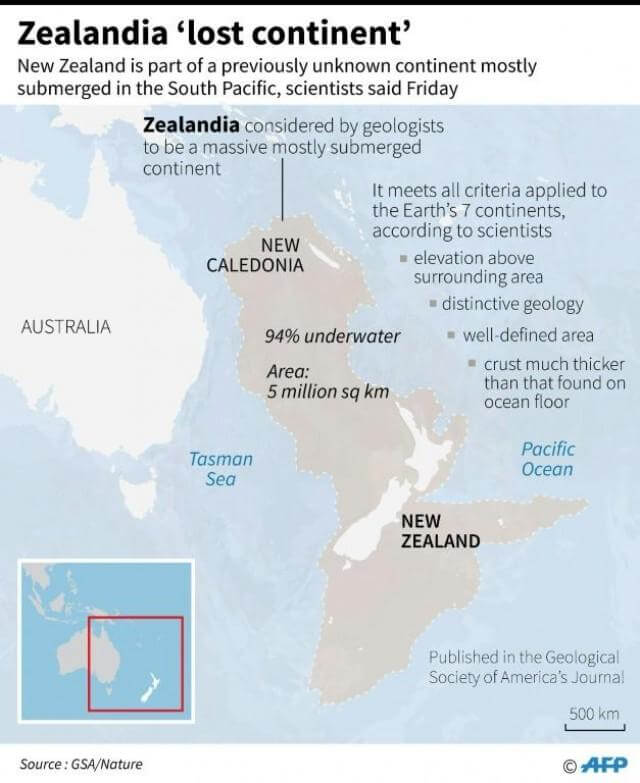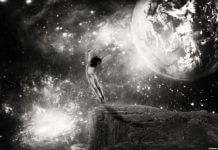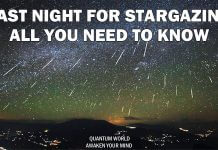
After 375 years of mystery, the legendary Zealandia, aka Te Riu-a-Māui, has finally been unveiled! This ancient land was once part of the gargantuan supercontinent Gondwana, alongside Western Antarctica and Eastern Australia. But 105 million years ago, Zealandia detached and disappeared under the ocean, leaving more than 94% of its landmass submerged and geologists baffled. 🌊🌍
Dutch explorer Abel Tasman first documented Zealandia in 1642 while searching for the elusive “great Southern Continent” (Terra Australis). Instead, he met the Māori people, who revealed tantalizing clues about an undiscovered landmass to the east. 🧭🗺️
🔬 Zealandia Unearthed: After centuries of speculation, GNS geologists confirmed Zealandia’s existence in 2017, lying beneath an astonishing 6,560 feet (2km) of water. As the eighth continent, Zealandia stands apart, with only three territories within its boundaries. 🔬
Zealandia is now recognized as the world’s eighth continent, but its unique characteristics make it stand out from the other continents on the planet. Nick Mortimer, the geologist who led the study, noted that every other continent is home to multiple countries, while Zealandia has only three territories. Despite its underwater location, Zealandia is an important discovery that sheds light on the earth’s geological history and the forces that shaped the planet as we know it today.
The discovery of the long-lost continent of Zealandia, also known as Te Riu-a-Māui, has left scientists and historians in awe. For 375 years, the enigmatic landmass has evaded detection, submerged beneath the ocean and more than 94% of its surface hidden from sight. As a former part of the ancient supercontinent Gondwana, Zealandia’s separation and submersion have left geologists with many questions. This article will explore the astonishing revelation of Zealandia, its significance in Earth’s geological history, and how this discovery has reshaped our understanding of the planet’s formation.
The Search for Zealandia

Zealandia’s story begins in 1642 when Dutch explorer Abel Tasman set out on a mission to find the “great Southern Continent” or Terra Australis. Instead of discovering this mythical land, Tasman encountered the Māori people. The Māori shared valuable information about the surrounding landmass, including the existence of a large, unknown territory to the east. This tantalizing clue would set the stage for centuries of speculation and exploration.
The confirmation of Zealandia’s existence, however, would not come until 2017. GNS geologists, using advanced technology and data analysis, were able to prove that Zealandia was, in fact, a hidden continent lying beneath an incredible 6,560 feet (2km) of water. This monumental discovery established Zealandia as the world’s eighth continent, with its unique characteristics distinguishing it from the other continents on the planet.
Zealandia and Gondwana
Zealandia was once part of the colossal supercontinent Gondwana, alongside Western Antarctica and Eastern Australia. Gondwana was formed over 500 million years ago and began to break apart roughly 180 million years ago, resulting in the continents we know today. About 105 million years ago, Zealandia began to separate from Gondwana, but the reasons for this detachment remain a mystery to geologists.
As Zealandia drifted away from Gondwana, it gradually sank beneath the waves, with over 94% of the landmass remaining underwater for millennia. This submersion made it challenging for scientists to detect the continent and explain its geological history. However, the discovery of Zealandia has sparked new research and theories about Earth’s formation and the forces that shaped the continents as we know them today.
The Uniqueness of Zealandia
What sets Zealandia apart from other continents is its distinct characteristics. Unlike other continents that are home to multiple countries, Zealandia comprises only three territories. Additionally, the vast majority of the continent is submerged, making it difficult for researchers to study its geological features and history.
Despite its underwater location, Zealandia holds valuable information about Earth’s geological past. The discovery of the continent has prompted researchers to reevaluate previous theories about continental drift, plate tectonics, and the breakup of Gondwana. The study of Zealandia has also opened up new avenues of research into other submerged landmasses and the geological processes that have shaped our planet over time.
Zealandia’s Impact on Our Understanding of Earth’s History
The discovery of Zealandia has had a profound impact on our understanding of Earth’s geological history. As scientists continue to study the continent, they are uncovering new insights into the processes that have shaped the Earth and its continents. For example, Zealandia’s separation from Gondwana has led researchers to reconsider the mechanisms behind continental drift and the breakup of supercontinents.
Furthermore, the study of Zealandia has provided valuable information about the climate and environmental conditions that existed during the time of Gondwana.
This groundbreaking find sheds light on Earth’s geological heritage and reshapes our understanding of the planet’s formation. Don’t miss out on sharing this mind-blowing discovery with the world! 🎆🌊🌍












